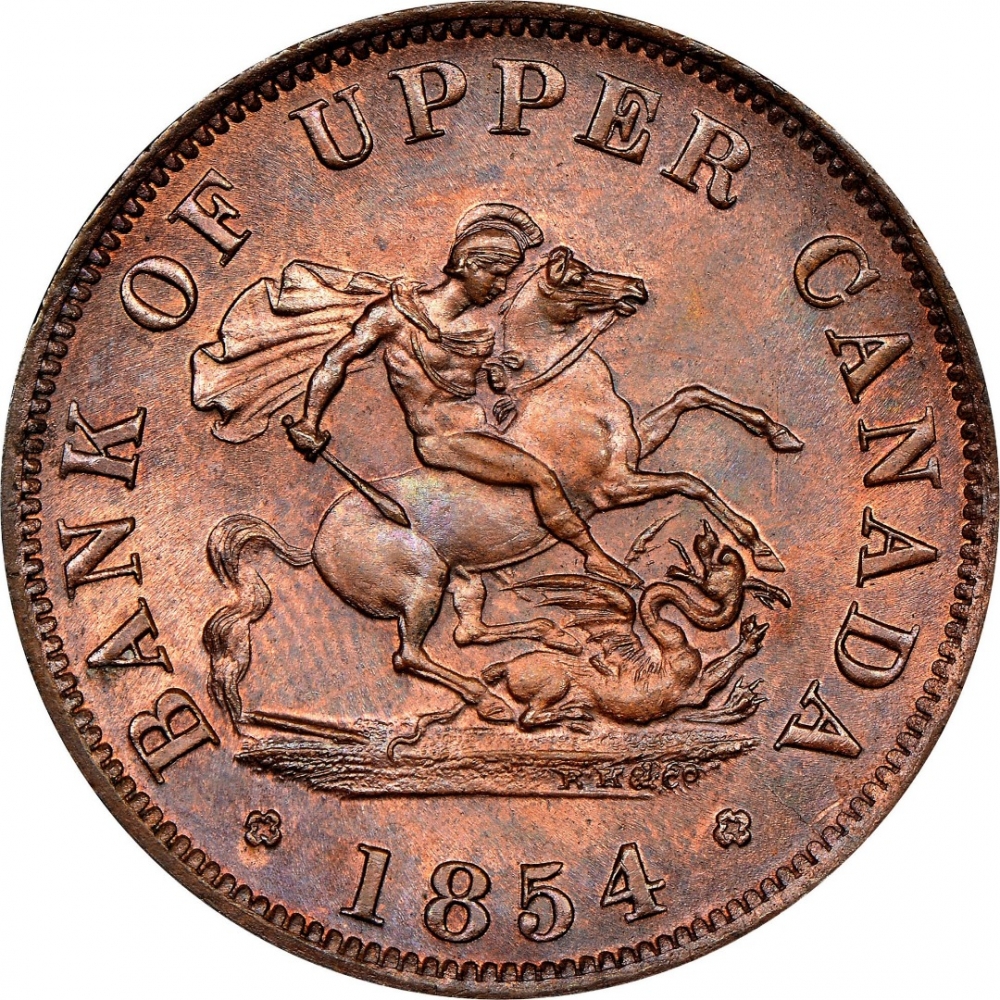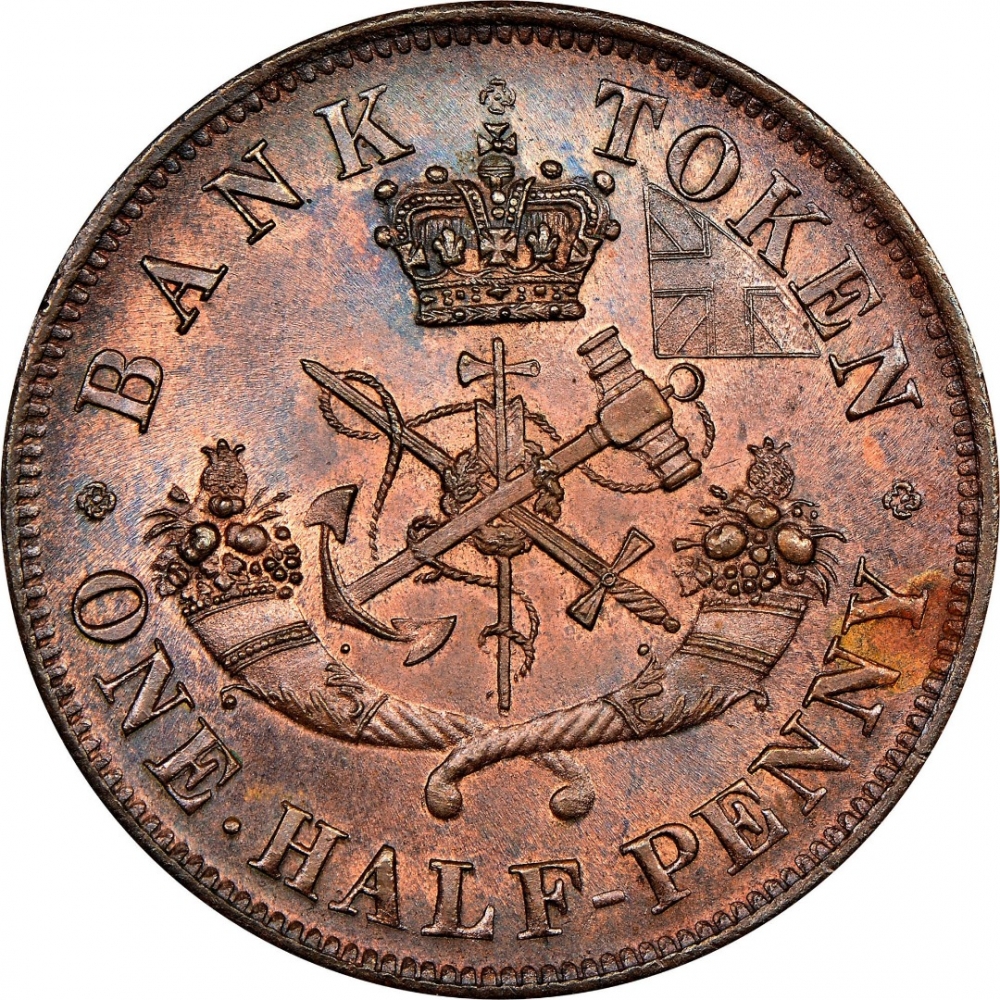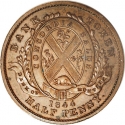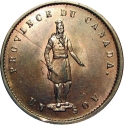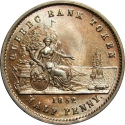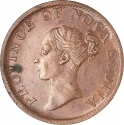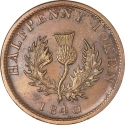You are about to finish your registration. Please check your mailbox (including spam folder). There should be a letter with a confirmation link. Check setting to make sure that your e-mail address is correct.
Send letter againDescription
In 1850, the Bank of Upper Canada received the right to issue a coinage due to a severe coin shortage. The coinage consisted of 1/2 Penny and 1 Penny Bank Tokens. The 1850 issue was struck at the Royal Mint, London, but the coins did not arrive in Canada until 1851.
In 1852, the Royal Mint started to strike the second issue, but due to a heavy schedule and time pressure, the coin dies and planchets were transferred to Heaton's Mint. There is a way that the strikings can be distinguished. The Royal Mint issue has the dies in medallic alignment, whereas, the Heaton's Mint issue has the dies in coin alignment.
In 1854, Heaton's Mint were asked to strike a new coinage. There are two types of '4's' in the date: a plain '4', and a crosslet '4'.
In 1857, Heaton's Mint were asked to strike this final coinage. The reason why this was the final coinage was, because the introduction of a decimal currency into Canada was being contemplated.
Engraver: John Pinches
Obverse

|
A representation of Saint George slaying the dragon based on Benedetto Pistrucci's gold sovereign coinage design. BANK OF UPPER CANADA |
|---|---|
Reverse

|
Part of the coat of arms of Upper Canada. BANK TOKEN |
| Edge |
